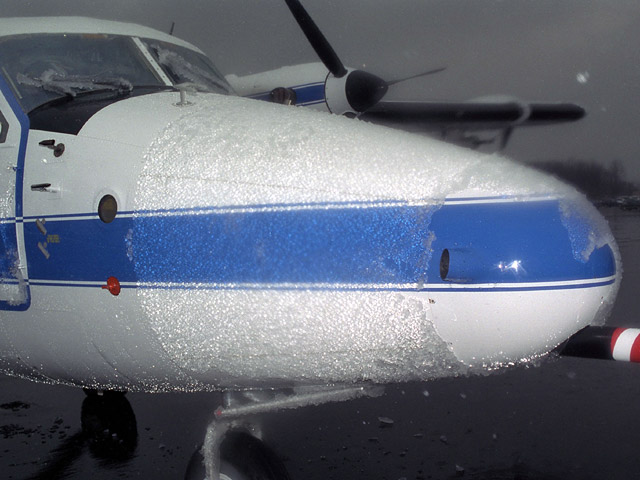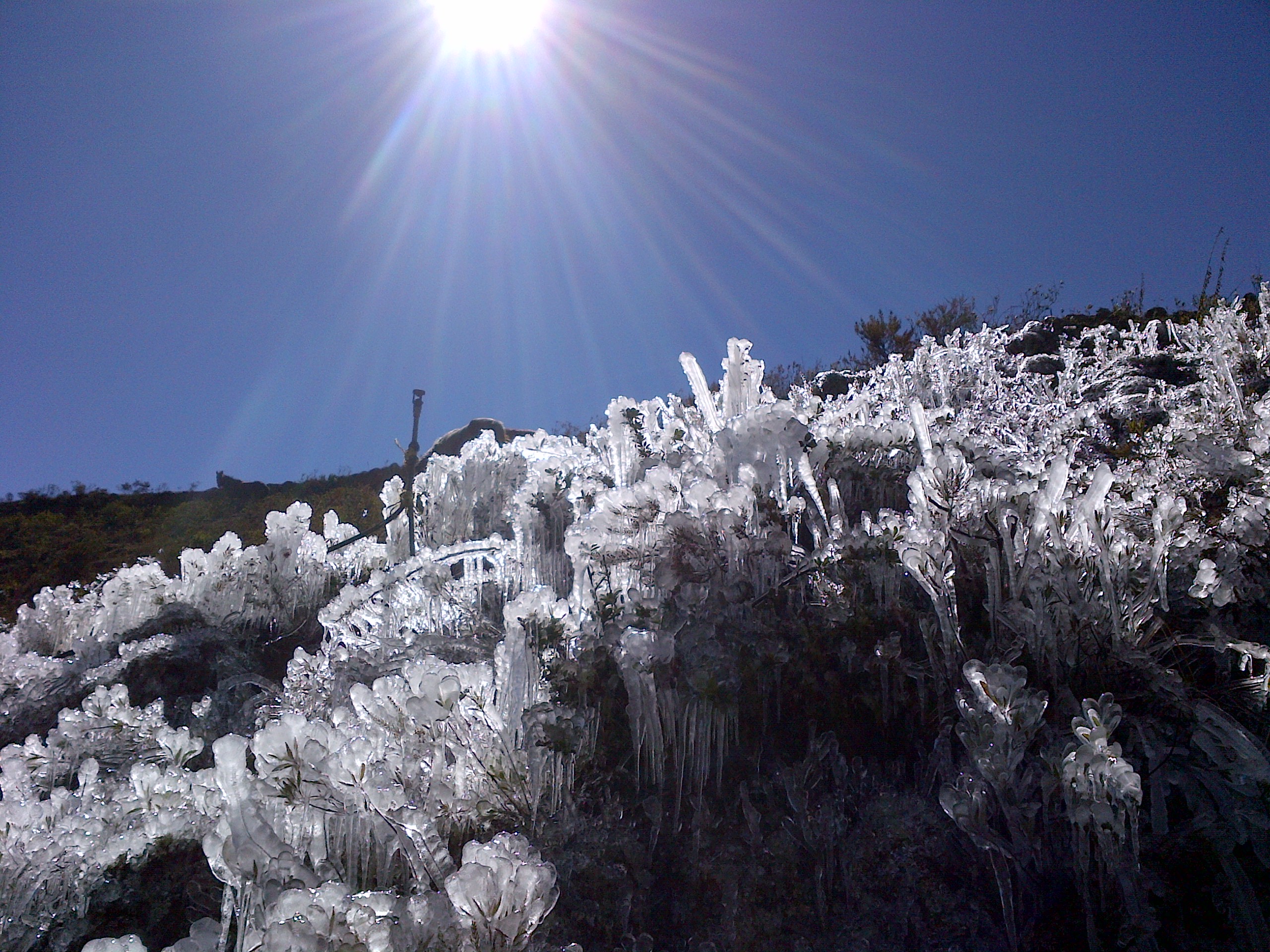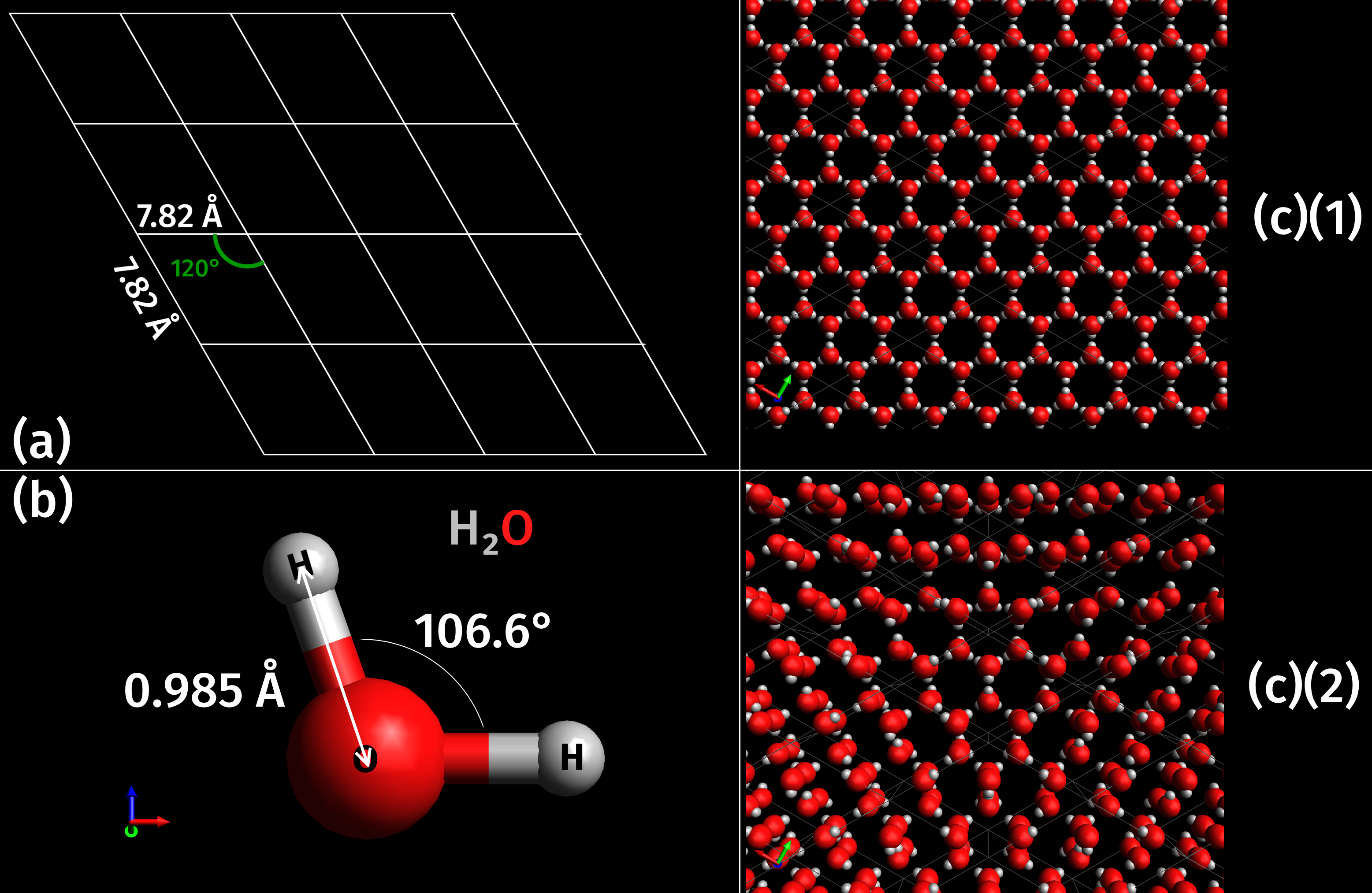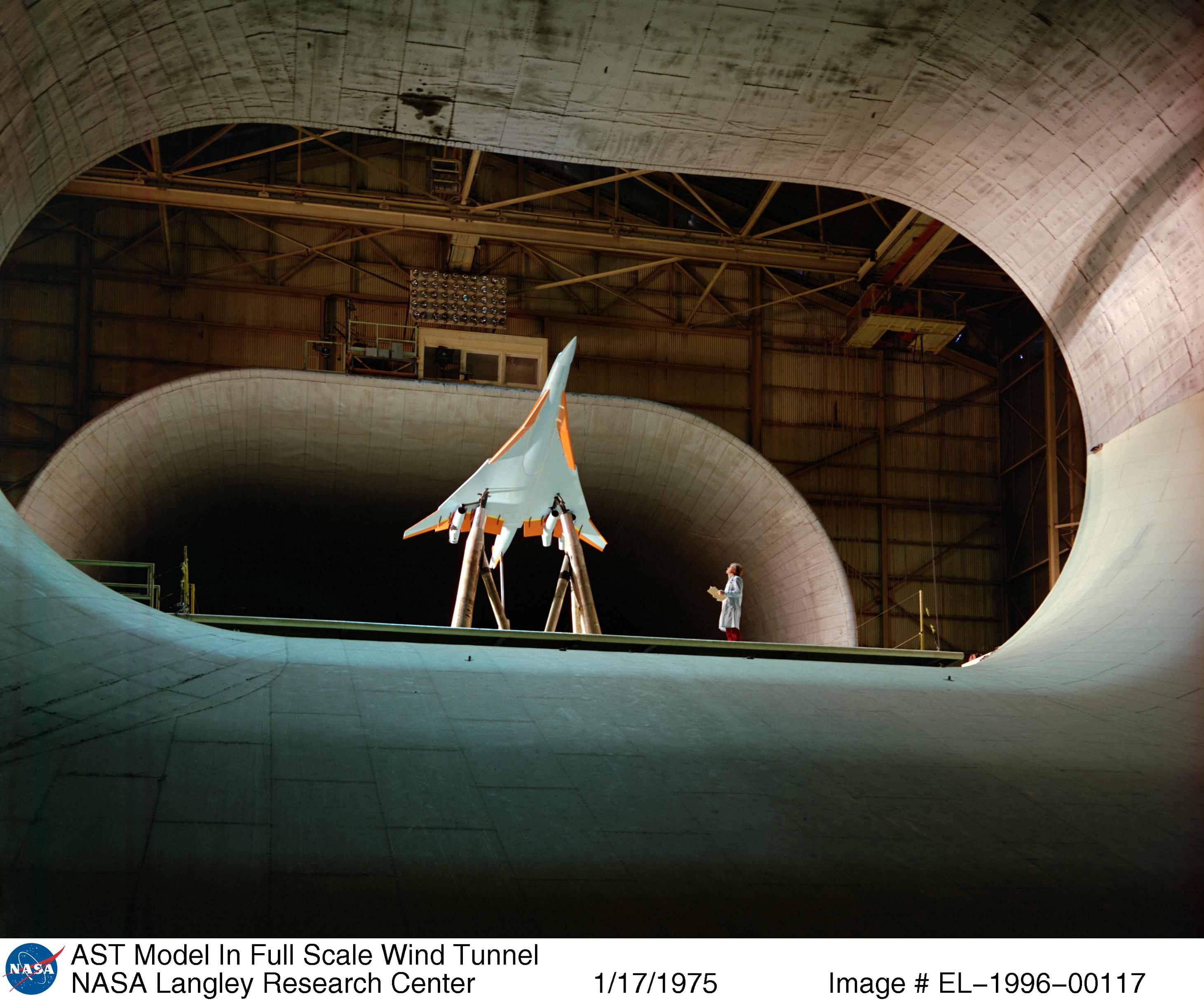|
Atmospheric Icing
Atmospheric icing occurs in the atmosphere when water droplets suspended in air freeze on objects they come in contact with. It is not the same as freezing rain, which is caused directly by precipitation. Atmospheric icing occurs on aircraft, towers, wind turbines, boats, oil rigs, and trees. Unmanned aircraft are particularly sensitive to icing. In cold climates, particularly those at higher elevations, atmospheric icing is common in winter as elevated terrain interacts with supercooled clouds that can cause icing on contact. Ice loads are a major cause of catastrophic failures of overhead electrical power lines, as power lines can break under the weight of accumulated ice. Therefore, estimation of maximum potential ice load is crucial in the structural design of power line systems to withstand ice loads, and this can be done with numerical icing models and examples that include meteorological data. Formation Water does not always freeze at . Water that persists in liqui ... [...More Info...] [...Related Items...] OR: [Wikipedia] [Google] [Baidu] |
Aerodynamics
Aerodynamics () is the study of the motion of atmosphere of Earth, air, particularly when affected by a solid object, such as an airplane wing. It involves topics covered in the field of fluid dynamics and its subfield of gas dynamics, and is an important domain of study in aeronautics. The term ''aerodynamics'' is often used synonymously with gas dynamics, the difference being that "gas dynamics" applies to the study of the motion of all gases, and is not limited to air. The formal study of aerodynamics began in the modern sense in the eighteenth century, although observations of fundamental concepts such as aerodynamic drag were recorded much earlier. Most of the early efforts in aerodynamics were directed toward achieving Aircraft#Heavier-than-air – aerodynes, heavier-than-air flight, which was first demonstrated by Otto Lilienthal in 1891. Since then, the use of aerodynamics through mathematical analysis, empirical approximations, wind tunnel experimentation, and computer si ... [...More Info...] [...Related Items...] OR: [Wikipedia] [Google] [Baidu] |
Soft Rime
Rime ice forms when supercooled water droplets freeze onto surfaces. In the atmosphere, there are three basic types of rime ice: *Soft rime forms when supercooled water freezes under calm wind conditions. It is milky and crystalline, like sugar, and similar to hoar frost. *Hard rime forms by rapid freezing of supercooled water under at least moderate wind conditions. The droplets freeze more or less individually, leaving air gaps. *Clear ice forms by slow freezing of supercooled water. Clear ice is typically transparent and homogeneous. Its amorphous and dense structure makes it adhesive. Soft and hard rime are less dense than clear ice and less adhesive, thus generally cause less damage. Glaze ice is similar in appearance to clear ice, however it is the result of a completely different process, occurring during freezing rain or drizzle. Rime ice also forms when ice forms on the surface of an aircraft, particularly on the leading edges and control surfaces when it flies t ... [...More Info...] [...Related Items...] OR: [Wikipedia] [Google] [Baidu] |
Frost
Frost is a thin layer of ice on a solid surface, which forms from water vapor that deposits onto a freezing surface. Frost forms when the air contains more water vapor than it can normally hold at a specific temperature. The process is similar to the formation of dew, except it occurs below the freezing point of water typically without crossing through a liquid state. Air always contains a certain amount of water vapor, depending on temperature. Warmer air can hold more than colder air. When the atmosphere contains more water than it can hold at a specific temperature, its relative humidity rises above 100% becoming supersaturated, and the excess water vapor is forced to deposit onto any nearby surface, forming seed crystals. The temperature at which frost will form is called the dew point, and depends on the humidity of the air. When the temperature of the air drops below its dew point, excess water vapor is forced out of solution, resulting in a phase change directly fro ... [...More Info...] [...Related Items...] OR: [Wikipedia] [Google] [Baidu] |
Condensation
Condensation is the change of the state of matter from the gas phase into the liquid phase, and is the reverse of vaporization. The word most often refers to the water cycle. It can also be defined as the change in the state of water vapor to liquid water when in contact with a liquid or solid surface or cloud condensation nuclei within the atmosphere. When the transition happens from the gaseous phase into the solid phase directly, the change is called deposition. Condensation is usually associated with water. Initiation Condensation is initiated by the formation of atomic/molecular clusters of that species within its gaseous volume—like rain drop or snow flake formation within clouds—or at the contact between such gaseous phase and a liquid or solid surface. In clouds, this can be catalyzed by water-nucleating proteins, produced by atmospheric microbes, which are capable of binding gaseous or liquid water molecules. Reversibility scenarios A few distinct rev ... [...More Info...] [...Related Items...] OR: [Wikipedia] [Google] [Baidu] |
Ice Protection System
Ice is water that is frozen into a solid state, typically forming at or below temperatures of 0 ° C, 32 ° F, or 273.15 K. It occurs naturally on Earth, on other planets, in Oort cloud objects, and as interstellar ice. As a naturally occurring crystalline inorganic solid with an ordered structure, ice is considered to be a mineral. Depending on the presence of impurities such as particles of soil or bubbles of air, it can appear transparent or a more or less opaque bluish-white color. Virtually all of the ice on Earth is of a hexagonal crystalline structure denoted as ''ice Ih'' (spoken as "ice one h"). Depending on temperature and pressure, at least nineteen phases ( packing geometries) can exist. The most common phase transition to ice Ih occurs when liquid water is cooled below (, ) at standard atmospheric pressure. When water is cooled rapidly (quenching), up to three types of amorphous ice can form. Interstellar ice is overwhelmingly low-density amorphous ice (LD ... [...More Info...] [...Related Items...] OR: [Wikipedia] [Google] [Baidu] |
Cumuliform
Cumulus clouds are clouds that have flat bases and are often described as puffy, cotton-like, or fluffy in appearance. Their name derives from the Latin , meaning "heap" or "pile". Cumulus clouds are low-level clouds, generally less than in altitude unless they are the more vertical cumulus congestus form. Cumulus clouds may appear by themselves, in lines, or in clusters. Cumulus clouds are often precursors of other types of clouds, such as cumulonimbus, when influenced by weather factors such as instability, humidity, and temperature gradient. Normally, cumulus clouds produce little or no precipitation, but they can grow into the precipitation-bearing cumulus congestus or cumulonimbus clouds. Cumulus clouds can be formed from water vapour, supercooled water droplets, or ice crystals, depending upon the ambient temperature. They come in many distinct subforms and generally cool the earth by reflecting the incoming solar radiation. Cumulus clouds are part of the larger cat ... [...More Info...] [...Related Items...] OR: [Wikipedia] [Google] [Baidu] |
Stratiform (other) ).
{{Disambiguation ...
Stratiform may refer to: * Any of the stratus family of clouds (fog, stratus clouds, altostratus clouds, cirrostratus clouds, nimbostratus clouds) and the precipitation coming from them. * Any occurrence of layered strata (see stratigraphic unit A stratigraphic unit is a volume of rock of identifiable origin and relative age range that is defined by the distinctive and dominant, easily mapped and recognizable petrographic, lithologic or paleontologic features ( facies) that characteriz ... [...More Info...] [...Related Items...] OR: [Wikipedia] [Google] [Baidu] |
Aircraft Design Process
The aircraft design process is a loosely defined method used to balance many competing and demanding requirements to produce an aircraft that is strong, lightweight, economical and can carry an adequate payload while being sufficiently reliable to safely fly for the design life of the aircraft. Similar to, but more exacting than, the usual engineering design process, the technique is highly iterative, involving high-level configuration tradeoffs, a mixture of analysis and testing and the detailed examination of the adequacy of every part of the structure. For some types of aircraft, the design process is regulated by civil aviation authority, civil airworthiness authorities. This article deals with powered aircraft such as airplanes and helicopter designs. Design constraints Purpose The design process starts with the aircraft's intended purpose. Commercial airliners are designed for carrying a passenger or cargo payload, long range and greater fuel efficiency whereas fighter jets ... [...More Info...] [...Related Items...] OR: [Wikipedia] [Google] [Baidu] |
Airfoil
An airfoil (American English) or aerofoil (British English) is a streamlined body that is capable of generating significantly more Lift (force), lift than Drag (physics), drag. Wings, sails and propeller blades are examples of airfoils. Foil (fluid mechanics), Foils of similar function designed with water as the working fluid are called hydrofoils. When oriented at a suitable angle, a solid body moving through a fluid deflects the oncoming fluid (for fixed-wing aircraft, a downward force), resulting in a force on the airfoil in the direction opposite to the deflection. This force is known as aerodynamic force and can be resolved into two components: lift (perpendicular to the remote freestream velocity) and drag (Parallel (geometry), parallel to the freestream velocity). The lift on an airfoil is primarily the result of its angle of attack. Most foil shapes require a positive angle of attack to generate lift, but Camber (aerodynamics), cambered airfoils can generate lift at zero ... [...More Info...] [...Related Items...] OR: [Wikipedia] [Google] [Baidu] |
Stall (fluid Dynamics)
In fluid dynamics, a stall is a reduction in the lift coefficient generated by a foil as angle of attack exceeds its critical value.Crane, Dale: ''Dictionary of Aeronautical Terms, third edition'', p. 486. Aviation Supplies & Academics, 1997. The critical angle of attack is typically about 15°, but it may vary significantly depending on the fluid, foil – including its shape, size, and finish – and Reynolds number. Stalls in fixed-wing aircraft are often experienced as a sudden reduction in lift. It may be caused either by the pilot increasing the wing's angle of attack or by a decrease in the critical angle of attack. The former may be due to slowing down (below stall speed), the latter by accretion of ice on the wings (especially if the ice is rough). A stall does not mean that the engine(s) have stopped working, or that the aircraft has stopped moving—the effect is the same even in an unpowered glider aircraft. Vectored thrust in aircraft is used to maintain al ... [...More Info...] [...Related Items...] OR: [Wikipedia] [Google] [Baidu] |






